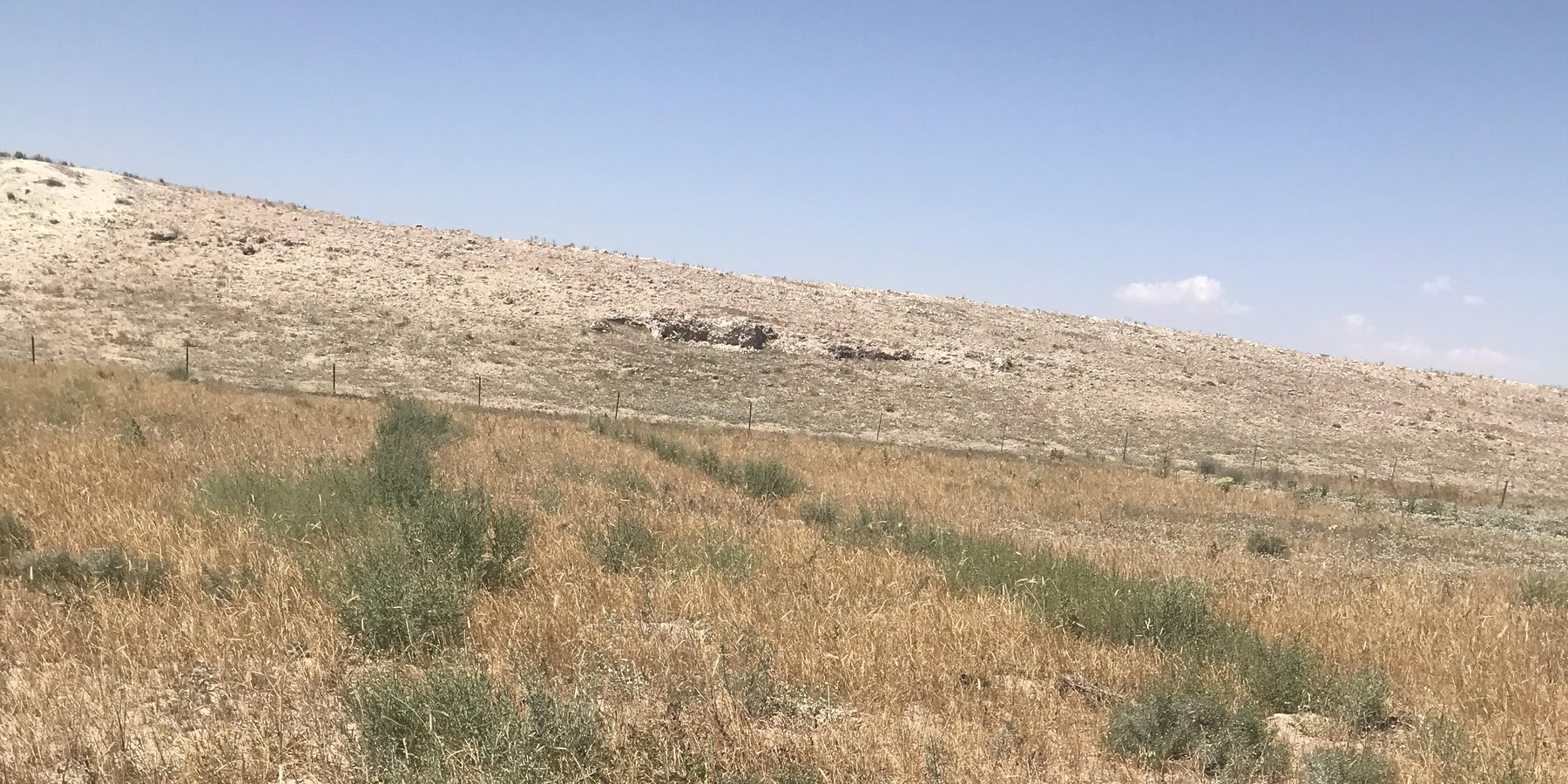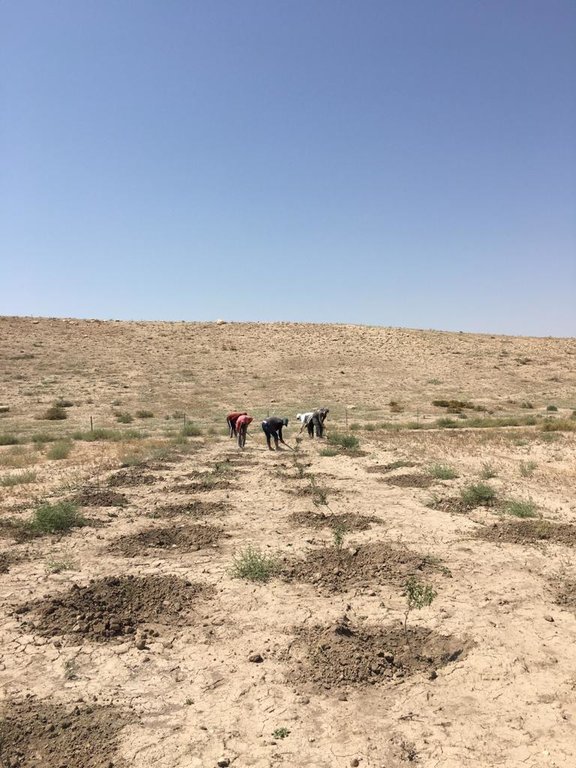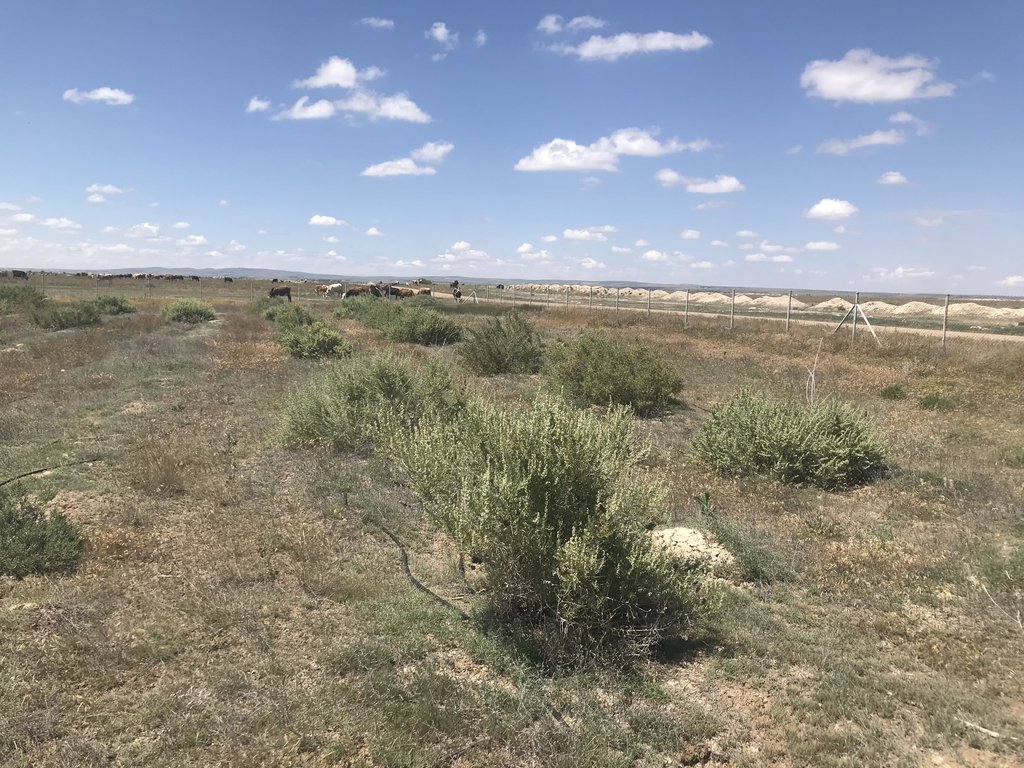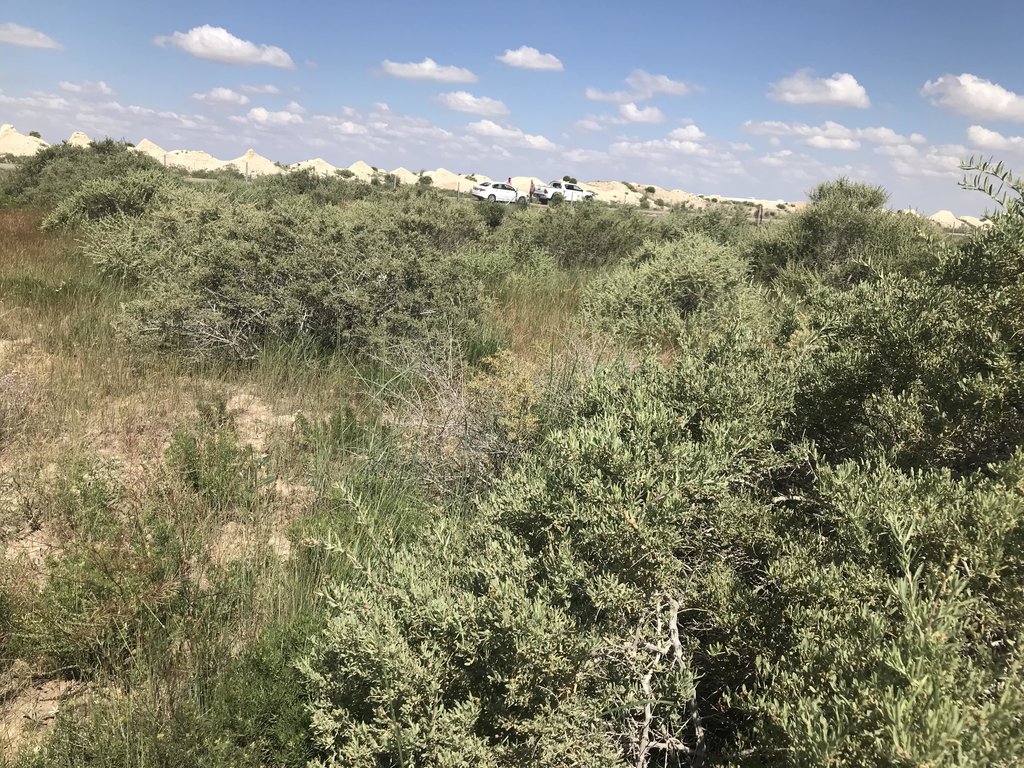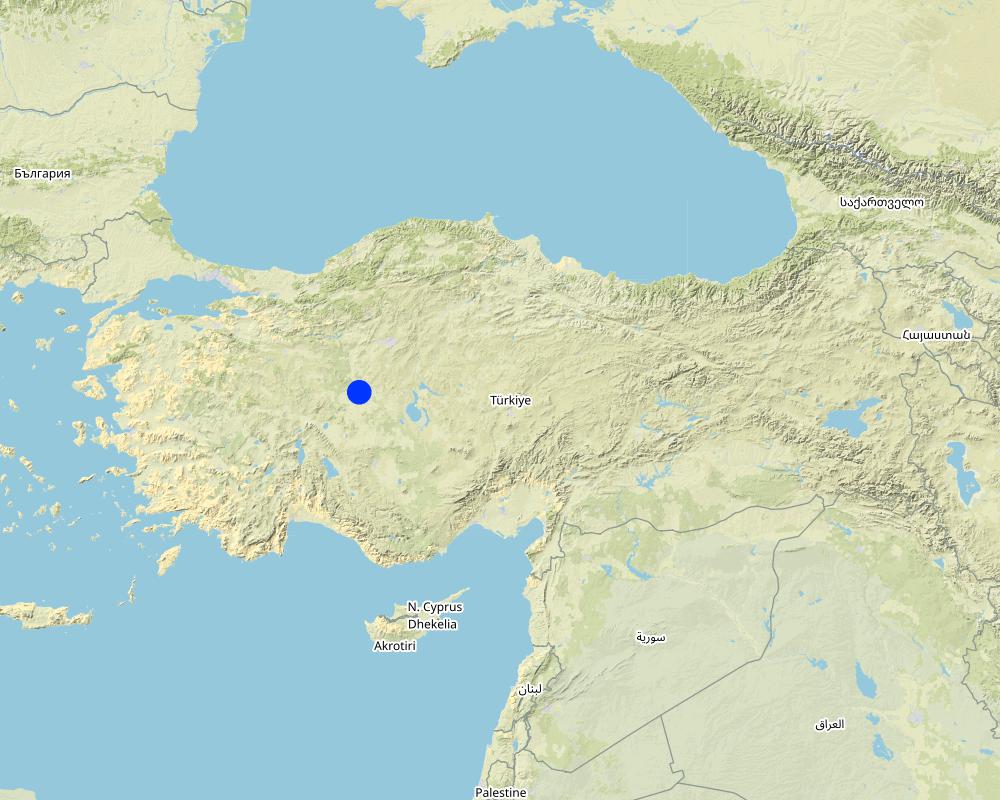Sustainable pasture improvement in the arid and semiarid lands of Turkiye [Turquia]
- Criação:
- Atualização:
- Compilador/a: Bilgi Sarihan
- Editor: –
- Revisores: William Critchley, Rima Mekdaschi Studer
approaches_6321 - Turquia
Veja as seções
Expandir tudo Recolher tudo1. Informação geral
1.2 Detalhes do contato das pessoas capacitadas e instituições envolvidas na avaliação e documentação da abordagem
Nome da(s) instituição(ões) que facilitou(ram) a documentação/avaliação da Abordagem (se relevante)
General Directorate Combating Desertification and Erosion (General Directorate Combating Desertification and Erosion) - Turquia1.3 Condições em relação ao uso da informação documentada através de WOCAT
Quando os dados foram compilados (no campo)?
26/06/2021
O/a compilador/a e a(s) pessoa(s) capacitada(s) aceitam as condições relativas ao uso de dados documentados através da WOCAT:
Sim
2. Descrição da abordagem de GST
2.1 Descrição curta da abordagem
Natural pastures have insufficient capacity to produce forage in the semi-arid rangelands of Central Anatolian Region. Therefore, a project has been initiated to plant forage shrubs which are drought and salinity tolerant in order to rehabilitate these pasturelands.
2.2 Descrição detalhada da abordagem
Descrição detalhada da abordagem:
Approximately 65% of Turkiye’s surface area (78 million hectares in total) consists of arid and semiarid areas, and this is where most of the pasturelands are located. These areas are deprived of vegetation and under threat of wind erosion. In addition, salinity is a serious problem on approximately 2 million hectares. In recent years, the General Directorate of Combating Desertification and Erosion has been implementing projects to improve pasture quality in arid and salty areas by planting adapted shrubs. Natural pastures have insufficient capacity to produce forage sustainably. Droughts, which are increasingly felt with global warming and climate change, have further limited forage production, especially in Central Anatolian Region’s rangelands. A project was initiated in the dry, nutrient-poor and heavy soils land within the borders of Kırsehir (Malya) and Ankara (Polatli) Agricultural Operations Directorate. Forage shrubs and herbaceous plants which are resistant to drought and overgrazing were selected: namely Atriplex canescens, Kochia prostrata, Agropyron elongatum and Agropyron intermedium. Atriplex canescens is, in particular, drought tolerant and rapidly increases the yield of animal feed in degraded pastures. No chemical fertilizer was applied to this species, which was given limited water only for the first two years after planting. Despite this, the plants grew successfully. It is thought that the continuity of the pasture established in this approach is possible in most of the arid areas. The management of the improved field will be provided by planned grazing. One year, part of the pasture will be opened for grazing in one season, while other parts will be opened for grazing in the second year. In this way, land degradation of the area will be prevented. One of the primary goals of this project is to contribute to the improvement of degraded pasture's biomass productivity. The project also support efforts to prevent wind erosion. Under the project, adaptation to drought, growth and biomass of the planted and cultivated species are monitored, and their contribution to the regional livestock's feed source capacity and soil fertility are recorded. Above all, the approach will help to provide sustainable land improvement, especially where livestock keepers face challenges with drought.
2.3 Fotos da abordagem
2.5 País/região/locais onde a abordagem foi aplicada
País:
Turquia
Região/Estado/Província:
The Central Anatolian Region
Map
×2.6 Datas de início e término da abordagem
Caso o ano exato seja desconhecido, indique a data aproximada de início da abordagem:
menos de 10 anos atrás (recentemente)
2.7 Tipo de abordagem
- Baseado em projeto/programa
2.8 Principais metas/objetivos da abordagem
To summarize the objectives of the aproach:
- Creating wind protection strips by planting shrub species - that are adaptable to wind erosion, drought and barrenness, to protect the soil surface from wind erosion,
- Growing shrubs and herbaceous forage crops in the field in order to reduce the scarcity of feed resources in arid and semi-arid lands,
- Increase the income of the rural population from livestock keeping,
- Improve the soil health and soil physical quality in terms of providing important ecosystem services,
- Contribute to the transformation of arid and semi-arid areas into Carbon Sink Areas,
- Serve the objectives of Land Degradation Neutrality,
2.9 Condição que propiciam ou inibem a implementação de tecnologia/tecnologias aplicada(s) segundo a abordagem
Colaboração/coordenção de atores
- Propício
General Directorate Combating desertification and erosion collaborate with the General Directorate of Agricultural Operations and its all local departments. General Directorate Combating desertification and erosion also has collboration with the livestock keepers.
Quadro jurídico (posse de terra, direitos de uso da terra e da água)
- Propício
The land ownership regime has helped the approach implementation. Project areas belong to state, so applying the project isn't a problem.
Políticas
- Propício
Pasture laws support sustainable pasture management.
Conhecimento sobre GST, acesso a suporte técnico
- Propício
The project includes technical support of the General Directorate Combating desertification and erosion
Carga de trabalho, disponibilidade de força de trabalho
- Propício
People who live in rural areas understand the importance of the pasture rehabilitation in terms of livestock, so they contribute with manpower.
3. Participação e papel das partes interessadas envolvidas
3.1 Partes interessadas envolvidas na abordagem e seus papéis
- Usuários de terra/comunidades locais
Local land users, rural population
Local land users provide technical support
- Especialistas em GST/ consultor agrícola
3.2 Envolvimento do usuários de terra/comunidades locais nas diferentes fases da abordagem
| Envolvimento do usuários de terra/comunidades locais | Especifique quem estava envolvido e descreva as atividades | |
|---|---|---|
| Iniciação/motivação | Participativo | Meetings, seminars and others with the local land users |
| Planejamento | Participativo | Local land users (rural population) are included in the process of planning |
| Implementação | Participativo | |
| Monitoramento/avaliação | Participativo |
3.4 Decisão sobre a seleção de tecnologia/tecnologias de GST
Especifique quem decidiu sobre a seleção de tecnologia/tecnologias a serem implementadas:
- Principalmente especialistas em GST, após consulta com usuários da terra
Especifique em que base foram tomadas as decisões:
- Avaliação de conhecimento bem documentado de GST (tomada de decisão baseada em evidências)
4. Suporte técnico, reforço das capacidades e gestão do conhecimento
4.1 Reforço das capacidades/ formação
Foi oferecida formação aos usuários da terra/outras partes interessadas?
Sim
Especifique quem foi capacitado:
- Usuários de terra
- Equipe de campo/consultores
Tipo de formação:
- Em exercício
- Reuniões públicas
Assuntos abordados:
The Characteristics of Dry Land Ecology, Deficit Irrigation on Plants, Pasturelands in Arid and Semiarid Lands, improvement of biomass for livestock in pasture areas where located in dry lands...
4.2 Serviço de consultoria
Os usuários de terra têm acesso a um serviço de consultoria?
Não
4.3 Fortalecimento da instituição (desenvolvimento organizacional)
As instituições foram fortalecidas ou estabelecidas através da abordagem?
- Sim, moderadamente
Especifique a que nível (níveis) as instituições foram fortalecidas ou estabelecidas:
- Nacional
4.4 Monitoramento e avaliação
Monitoramento e avaliação são partes da abordagem?
Sim
Comentários:
The yields of forage plants are measured annually. Physical measurements (forage yield, forage quality, grazing capacity, soil quality) together with field photographs are used for measurement and evaluation. Sampling and measuring works are done by engineers. The evaluation part is discussed by the experts.
Caso afirmativo, esta documentação é destinada a ser utilizada para monitoramento e avaliação?
Sim
Comentários:
All documentation made on the field will be used for monitoring and evaluation. According to the results obtained, our study will be expanded to other arid areas.
4.5 Pesquisa
A pesquisa foi parte da abordagem?
Sim
Especifique os tópicos:
- Ecologia
Dê mais detalhes e indique quem realizou a pesquisa:
The General Directorate of Combating Desertification and Erosion and Agricultural Enterprises carry out the research together. In addition, the faculties of agriculture of the relevant universities are included in the research. It is thought that the research will contribute to both other agricultural workers and the next generation of scientists.
5. Financiamento e apoio material externo
5.1 Orçamento anual para o componente de GST da abordagem
Caso o orçamento exato seja desconhecido, indique a faixa:
- 10.000-100.000
5.2 Apoio financeiro/material concedido aos usuários da terra
Os usuários da terra receberam apoio financeiro/material para a implementação de tecnologia/tecnologias?
Não
5.4 Crédito
Foi concedido crédito segundo a abordagem para atividades de GST?
Não
5.5 Outros incentivos ou instrumentos
Foram utilizados outros incentivos ou instrumentos para promover a implementação das tecnologias de GST?
Não
6. Análise de impactos e declarações finais
6.1 Impactos da abordagem
A abordagem auxiliou os usuários da terra a implementar e manter as tecnologias de GST?
- Não
- Sim, pouco
- Sim, moderadamente
- Sim, significativamente
Pasture improvement through planting the drought tolerant shrubs is understood by land users.
6.2 Principal motivação dos usuários da terra para implementar a GST
- Produção aumentada
- Lucro (lucrabilidade) aumentado, melhora da relação custo-benefício
- Degradação do solo reduzida
- Riscos de desastre reduzido
- Consciência ambiental
- melhoria dos conhecimentos e aptidões de GST
6.3 Atividades de sustentabilidade de abordagem
Os usuários da terra podem manter o que foi implementado através da abordagem (sem apoio externo)?
- Incerto
Caso negativo ou incerto, especifique e comente:
Since land users are new to this type of study, they may not be able to implement this study alone at this time. However, in the next few years, land users will also have the knowledge and skills to practice on their own. For example, controlled grazing is required for the plants in the pasture area to maintain their development. The studies, which started with understanding the importance of controlled grazing and the characteristics of arid areas, will continue with plant production and application works.
6.4 Pontos fortes/vantagens da abordagem
| Pontos fortes/vantagens/oportunidades na visão do usuário da terra |
|---|
| Land users consider the approach applied to be very beneficial and sustainable. The first reason is that the applied species can grow in extreme droughts because their water requirements are very low. The second reason is that the applied plants can be used as animal feed. |
6.5 Pontos fracos, desvantagens da tecnologia e formas de superá-los
| Pontos fracos/desvantagens/riscos na visão do usuário da terra | Como eles podem ser superados? |
|---|---|
| Although land users consider the approach to be very beneficial and sustainable, they suspect that shepherds will deviate from the proposed grazing plan. Another issue is that the lands are generally hard to reach and as a result of sudden changes in climatic conditions, it is thought that the plants may not stay in the area for many years. |
7. Referências e links
7.2 Referências às publicações disponíveis
Título, autor, ano, ISBN:
Bilgi Sarihan (bilgi.sarihan@csb.gov.tr)
7.3 Links para informação relevante que está disponível online
URL:
https://qcat.wocat.net/en/wocat/approaches/edit/approaches_6321/app__7/
Links e módulos
Expandir tudo Recolher tudoLinks
Não há links
Módulos
Não há módulos


